
Badia Fiorentina or Florentine Badia, which translates as Florentine Abbey (Badia Fiorentina) is an abbey in Florence with an important Catholic church, monastery and works of art.
Badia or Badia is a popular abbreviation of the word "abbey".
The abbey is dedicated to the Virgin Mary and is called the "Abbey of Santa Maria" (L'abbazia di Santa Maria Firenze).
Across the street from the abbey, Dante Alighieri was supposedly born and raised. The place is now called "Dante's House" and it houses the Dante Museum (although, most likely, it was hardly the place where Dante lived). Also, according to one of the legends, Dante saw his muse Beatrice for the first time in the abbey church.
The complex is located in the heart of the ancient city of Florence (historical center) opposite the Bargello Palace Museum and near Piazza di San Firenze.
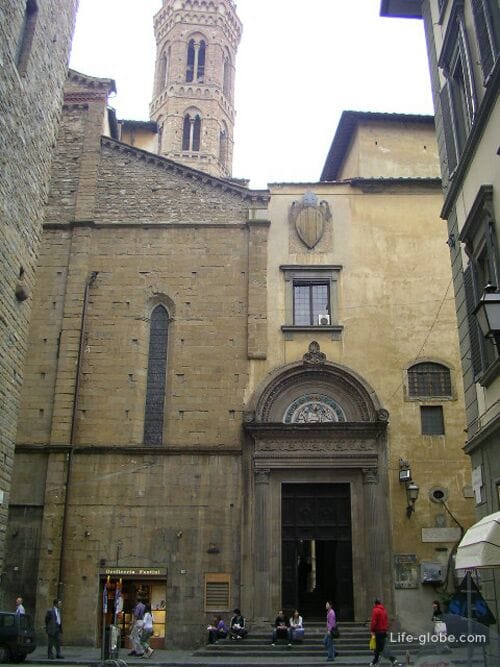
View of the Abbey of the Virgin Mary and the surrounding buildings from Piazza San FirenzeThe abbey was founded as a Benedictine institution in 978 by Villa, Countess of Tuscany, in memory of her late husband Hubert.

Then the abbey with the ancient Romanesque church was one of the main buildings of medieval Florence. In 1071, a hospital was built in the abbey. Since 1285, the church has been radically reconstructed in the Gothic style by the famous Italian architect and sculptor Arnolfo di Cambio. The church underwent Baroque transformations in the 17th and 18th centuries.
In 1307, part of the bell tower was demolished as punishment to the monks for non-payment of taxes, but at the beginning of 1330 it was restored, as a result of which the bell tower combines two styles: Romanesque at the base and Gothic at the top (the current height of the bell tower is about 70 meters).
At the beginning of the sixteenth century, Giovan Battista Pandolfini commissioned Benedetto da Rovezzano to renovate part of the monastery, as a result of which the Pandolfini chapel and the northern loggia were built, which today must be crossed to enter the church.
Now Badia Fiorentina is home to a congregation of monks and nuns known as the Jerusalem Brotherhood. The church and monastery can be visited. Masses are held in the church.
The entrance to the church, next to the portal of which the old apse is still visible
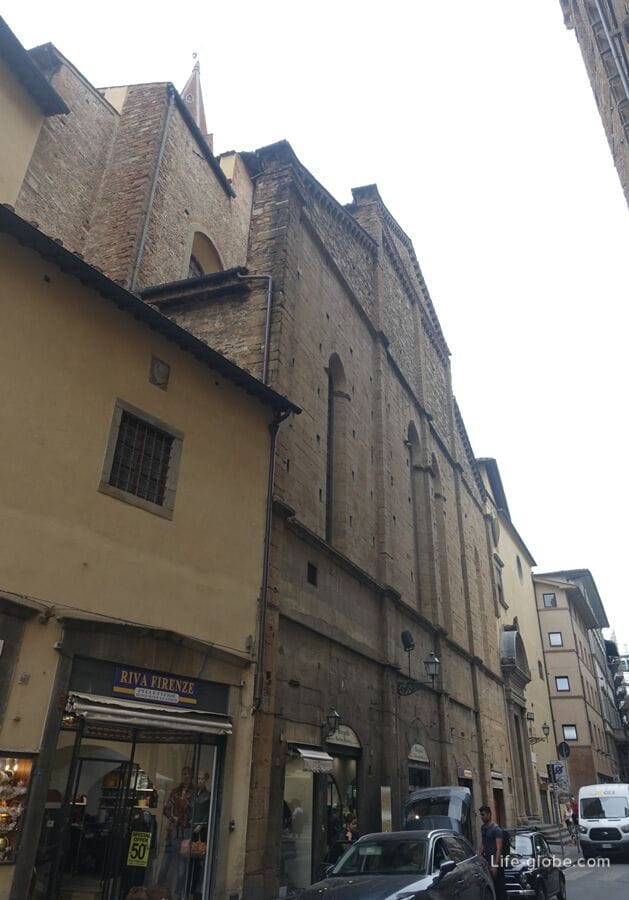
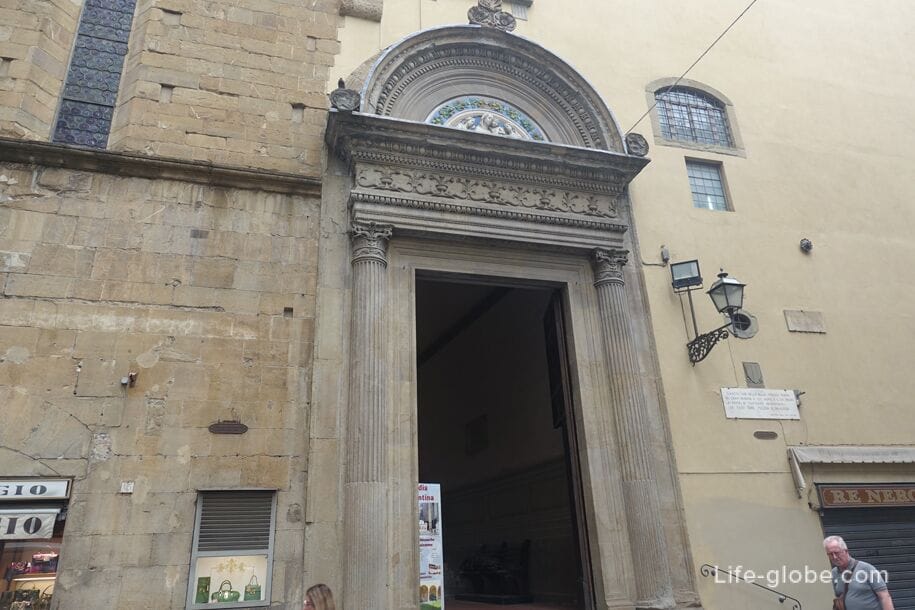

Courtyard with loggia in the abbey near the entrance to the church
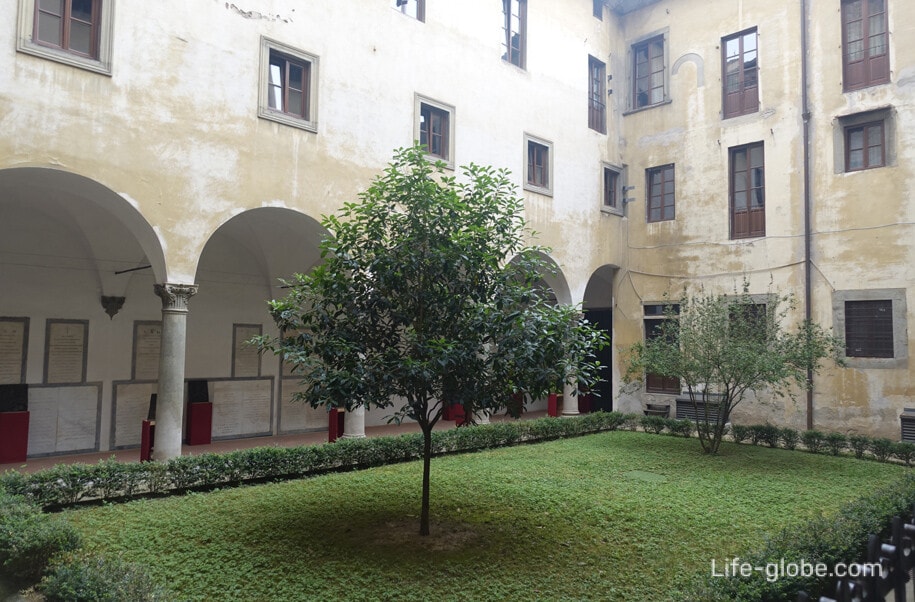
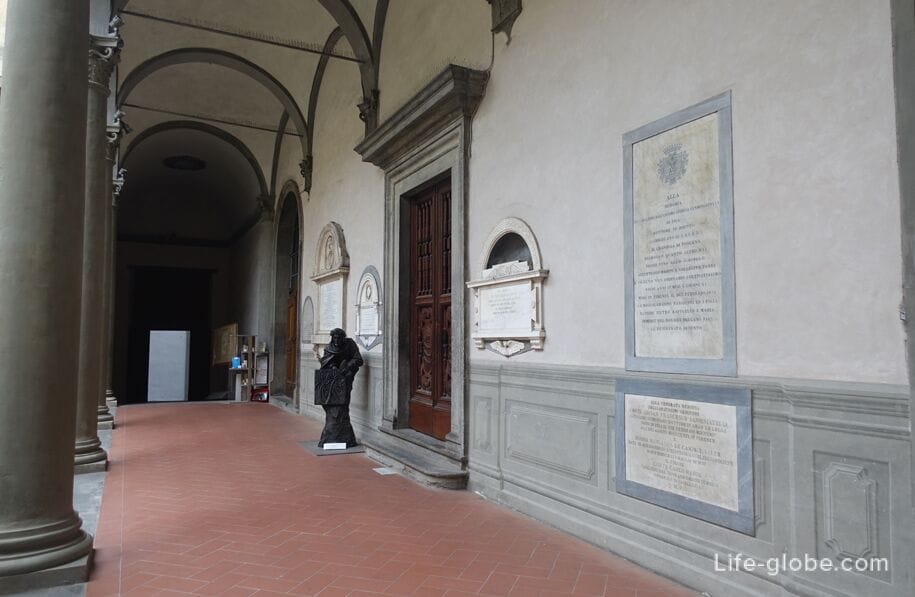
The interior of the church is an overlay of styles and structures.
The hall attracts attention with a carved wooden ceiling made by Felice Gamberay before 1631, which hides Gothic trusses.
The presbytery with a sixteenth-century choir by Francesco and Marco del Tasso is decorated with frescoes by Gian Domenico Ferretti in 1734 and a quadrature by Pietro Anderlini.
Also noteworthy is the large altarpiece of Filippino Lippi's 1482-1486 work "The Apparition of the Virgin to Saint Bernard" of high pictorial quality. Traces of frescoes of the fourteenth-century cycle of stories about Christ are present on the counter facade and in the chapel of San Bernardo. The Baroque Chapel of San Mauro, on the right, was completely frescoed by Vincenzo Meucci in 1717, and on the altar is a canvas by Honorio Marinari with San Mauro healing the crippled. Above the chapel is a large carved and gilded wooden organ from 1717.
In two chapels next to the altar there are canvases depicting the Pentecost by Mirabello Cavalori (right) and "Ascent to Calvary" by Giovanni Battista Naldini (circa 1570, left).
On the left wall, above the monument to Ugo di Toscana, in the choir there is a valuable canvas "Assumption and Saints" by Giorgio Vasari from 1568.
There are also tombstones, among which the most important are the monuments of the fifteenth century: the tomb of Giannozzo Pandolfini (died in 1456), made in the workshop of Bernardo Rossellino; the tomb of Bernardo Giugni di Mino da Fiesole, a famous lawyer and diplomat who died in 1456; the tombs of Mino and the Marquis Ugo di Toscana.
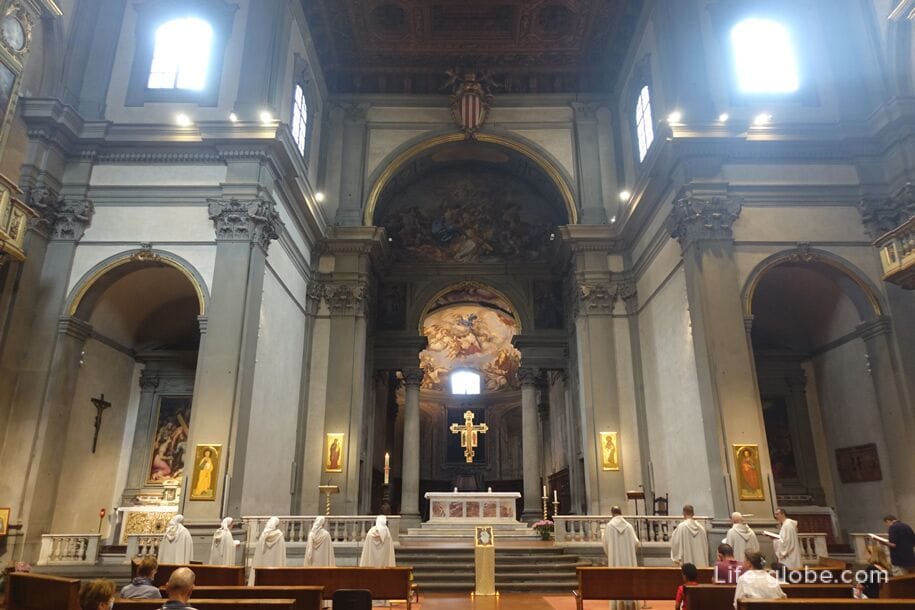
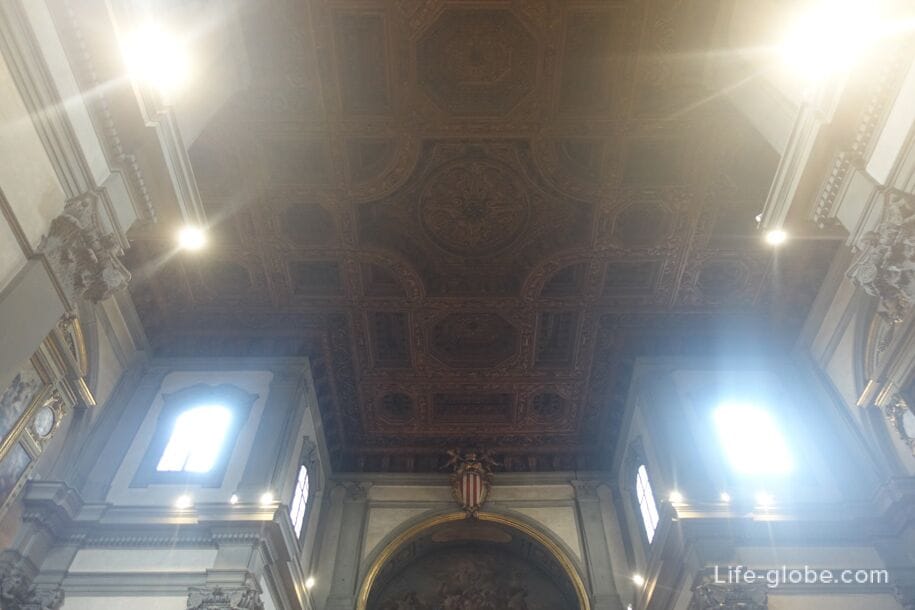
The abbey has preserved a monastery (monastery of Oranges, Chiostro degli Aranci) built between 1432 and 1438 by Bernardo Rossellino.
The quadrangular monastery courtyard is surrounded by two superimposed arcades with lowered arches.
From the lower floor there is an entrance to the old chapter house, decorated with memoirs, inscriptions and tombstones, as well as architectural fragments.
On the second floor there is a cycle of frescoes about the life of Saint Benedict, painted from 1436 to 1439 by an author who was considered unknown for a long time, but was recently definitively identified as the Portuguese Giovanni da Consalvo (Joao Goncalves). The frescoes were removed in the twentieth century, and today in their place you can see synopses of works.
The lunette was added later by the young Agnolo Bronzino, and the two lunettes in the southeast corner have a later Gothic style and possibly belong to an earlier period.

Entrance to the ancient chapter house
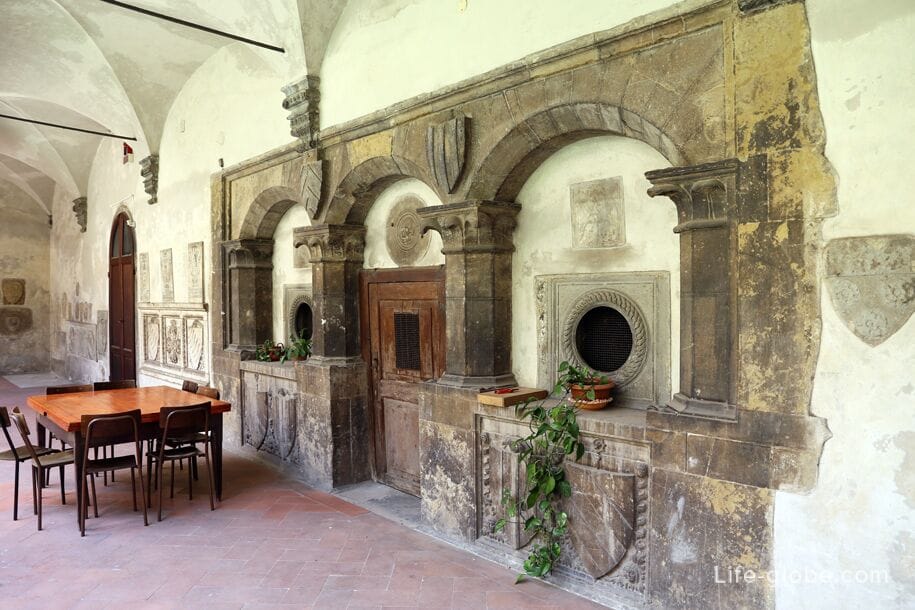
Frescoes on the second floor
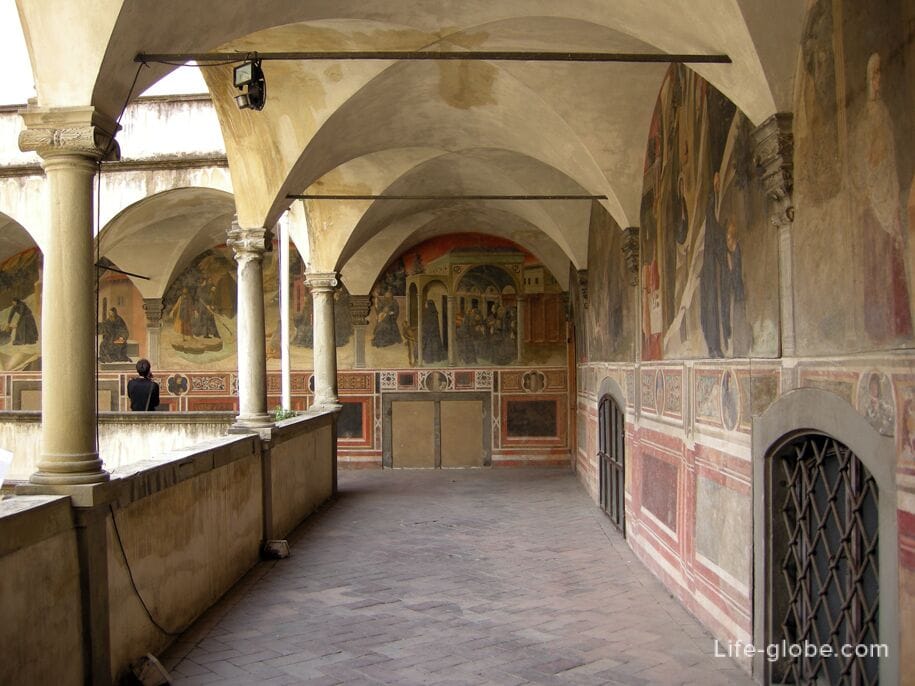
Entrance to the church is free.
A tourist visit to the abbey with the monastery is possible for a cash fee.
Florentine Abbey Website: badiafiorentina.org.
Badia Fiorentina is located in the heart of the historic center of Florence, just 140 meters from the beautiful historic Piazza della Signoria and 200 meters from the main square of the city - the Duomo Square.
Address of Badia Fiorentina: Via del Proconsolo, 50122 Firenze FI, Italy.
Coordinates of Badia Fiorentina: 43°46'13.6"N 11°15'27.8"E (43.770433, 11.257717).
All accommodation facilities in Florence (hotels, apartments, guest houses, etc.), including in the historical center of the city and more remotely from it, can be viewed and booked here